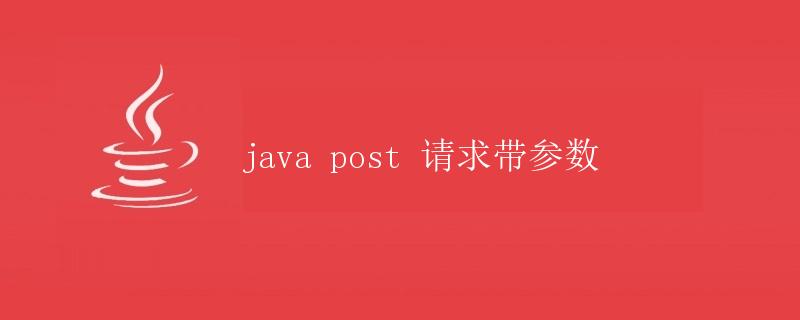Java post 请求带参数

在实际开发中,我们经常需要向服务器发送 post 请求并携带参数。本文将介绍如何使用 Java 发送 post 请求并携带参数,以及如何处理服务器返回的数据。
HttpURLConnection
Java 中提供了 HttpURLConnection 类来处理 HTTP 请求。我们可以使用它来发送 post 请求并携带参数。下面是一个简单的示例代码:
import java.io.BufferedReader;
import java.io.DataOutputStream;
import java.io.InputStreamReader;
import java.net.HttpURLConnection;
import java.net.URL;
import java.net.URLEncoder;
public class PostRequest {
public static void main(String[] args) {
try {
String url = "http://example.com/api";
URL obj = new URL(url);
HttpURLConnection con = (HttpURLConnection) obj.openConnection();
con.setRequestMethod("POST");
con.setDoOutput(true);
String parameters = "param1=" + URLEncoder.encode("value1", "UTF-8") +
"¶m2=" + URLEncoder.encode("value2", "UTF-8");
DataOutputStream wr = new DataOutputStream(con.getOutputStream());
wr.writeBytes(parameters);
wr.flush();
wr.close();
int responseCode = con.getResponseCode();
System.out.println("Response Code: " + responseCode);
BufferedReader in = new BufferedReader( new InputStreamReader(con.getInputStream()));
String inputLine;
StringBuffer response = new StringBuffer();
while ((inputLine = in.readLine()) != null) {
response.append(inputLine);
}
in.close();
System.out.println("Response: " + response.toString());
} catch (Exception e) {
e.printStackTrace();
}
}
}
在上面的示例中,我们首先创建一个 URL 对象,然后通过它打开一个 HttpURLConnection。接下来设置请求方法为 POST,然后开启输出流并写入参数。将参数发送到服务器后,我们可以获取服务器返回的数据。
运行结果
如果服务器返回的数据是 JSON 格式,我们可以使用 Gson 库来解析数据。下面是一个完整的示例代码:
import com.google.gson.Gson;
import java.io.BufferedReader;
import java.io.DataOutputStream;
import java.io.InputStreamReader;
import java.net.HttpURLConnection;
import java.net.URL;
import java.net.URLEncoder;
public class PostRequestWithJsonResponse {
public static void main(String[] args) {
try {
String url = "http://example.com/api";
URL obj = new URL(url);
HttpURLConnection con = (HttpURLConnection) obj.openConnection();
con.setRequestMethod("POST");
con.setDoOutput(true);
String parameters = "param1=" + URLEncoder.encode("value1", "UTF-8") +
"¶m2=" + URLEncoder.encode("value2", "UTF-8");
DataOutputStream wr = new DataOutputStream(con.getOutputStream());
wr.writeBytes(parameters);
wr.flush();
wr.close();
int responseCode = con.getResponseCode();
System.out.println("Response Code: " + responseCode);
BufferedReader in = new BufferedReader(new InputStreamReader(con.getInputStream()));
String inputLine;
StringBuffer response = new StringBuffer();
while ((inputLine = in.readLine()) != null) {
response.append(inputLine);
}
in.close();
Gson gson = new Gson();
MyResponse data = gson.fromJson(response.toString(), MyResponse.class);
System.out.println("Response: " + data.toString());
} catch (Exception e) {
e.printStackTrace();
}
}
class MyResponse {
String key1;
String key2;
@Override
public String toString() {
return "MyResponse{" +
"key1='" + key1 + '\'' +
", key2='" + key2 + '\'' +
'}';
}
}
}
在上面的示例中,我们首先定义了一个 MyResponse 类来表示服务器返回的数据结构。然后使用 Gson 来将 JSON 数据转化为 Java 对象,方便我们处理数据。
结语
通过上面的示例,我们学习了如何使用 Java 发送 post 请求并携带参数,以及如何处理服务器返回的数据。在实际开发中,我们可以根据具体的需求对代码进行适当的调整。
 极客笔记
极客笔记